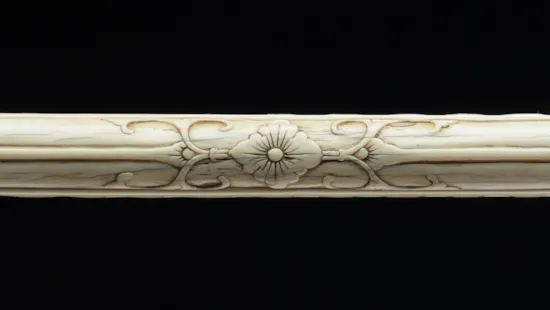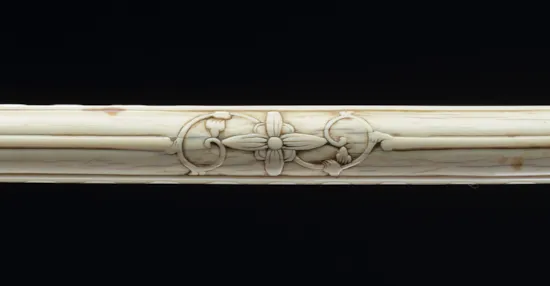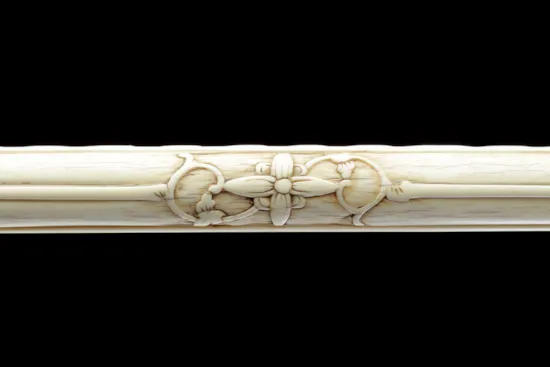Rare Pair of Chinese Carved Ivory Supports for a Hammock
An Unusual and Rare Pair of Chinese Carved Ivory Supports for a Hammock Decorated with Archaistic Scrolling Clouds
Excellent colour and patina
China
Ming Dynasty 1580 - 1644
Size: 78cm wide - 30¾ ins wide (each)
Belgium CITES: 2025/BE00988/CE
Excellent colour and patina
China
Ming Dynasty 1580 - 1644
Size: 78cm wide - 30¾ ins wide (each)
Belgium CITES: 2025/BE00988/CE
An Unusual and Rare Pair of Chinese Carved Ivory Supports for a Hammock Decorated with Archaistic Scrolling Clouds
Excellent colour and patina
China
Ming Dynasty 1580 - 1644
Size: 78cm wide - 30¾ ins wide (each)
Belgium CITES: 2025/BE00988/CE
Excellent colour and patina
China
Ming Dynasty 1580 - 1644
Size: 78cm wide - 30¾ ins wide (each)
Belgium CITES: 2025/BE00988/CE
Traditional hammocks originated in Central South America with the word coming from a Taino peoples word ‘Arwahan’ meaning ‘fish net’. In the medieval English Luttrel Psalter of circa 1330 A.D, an illumination shows the hammock as a hanging bed. Hammocks were not originally designed for leisure, but for protection from animals, reptiles, insects and damp. During the Tang period in China wooden platforms known as ‘Ji’ were sat on by kneeling, these were altered with rope and called ‘rope chuang’ or hammock. In his book ‘Borders of Chinese Civilisation’ by Douglas Howland he states that to sit down was regarded as an unusual custom viewed with shock. The Hou Jing biography records ‘ascending the hall to occupy an outlandish seat with feet dangling’. It was also reported by Cheng Dacheng, and quoted by Howland, that all the Ming court officials in the Purple Imperial Hall, (the Imperial Palace in the Forbidden City), were ‘on great hammocks’.
Ex Private English collection
Belgium CITES: 2025/BE00988/CE
Belgium CITES: 2025/BE00988/CE
Rare Pair of Chinese Carved Ivory Supports for a Hammock




















